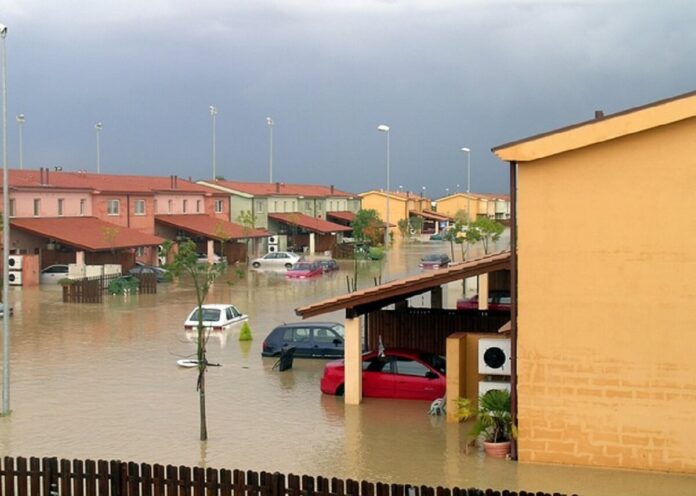Experiencing a flood is devastating, both emotionally and physically. The damage to your home and belongings can be overwhelming, leaving you wondering where to even start with the recovery process. But take heart; while the journey ahead may be challenging, it’s not insurmountable.
Florida, with its flat terrain, is more susceptible to flooding than any other state in the country. The state receives an average annual rainfall of 59.21 inches and boasts over 11,000 miles of rivers, streams, and waterways, making it particularly prone to flood events.
This comprehensive guide aims to walk you through the essential steps to restore your home after a flood. From assessing the damage to making necessary repairs and preventing future incidents, we’ve got you covered. By the end of this article, you’ll have a roadmap to help you navigate this difficult time and bring your home back to its former glory.
Assess the Damage: The First Critical Step
Before you dive into the restoration process, it’s crucial to assess the extent of the damage. This will help you understand the scope of work ahead and enable you to prioritize tasks effectively. Start by documenting everything—take photos, make lists, and consider hiring professionals to evaluate structural damage. Knowing exactly what you’re up against will not only help you estimate costs but also provide a clear picture for insurance claims. This initial assessment is the foundation upon which your entire recovery effort will be built.
In Naples, 6,696 properties face a higher than 26% likelihood of experiencing severe flooding within the next three decades. This accounts for 99% of all properties in the area. If you’re among the 99% of property owners in Naples at risk for severe flooding, consulting a Naples water damage restoration company can be a proactive step in safeguarding your home.
Water Removal: Draining the Deluge
The first tangible step in restoring your home is removing the standing water. This is a critical task that needs immediate attention to prevent further damage and potential health risks. You can use pumps, vacuums, and other water extraction tools to get the job done. Depending on the extent of the flooding, you may need to hire professionals to ensure thorough water removal. Remember, the quicker you get the water out, the less damage it will do over time, so act fast.
Drying and Dehumidifying: The Unsung Heroes of Restoration
Once the water is out, the next step is to dry the affected areas thoroughly. This is crucial to prevent mold growth and further structural damage. Use fans, dehumidifiers, and open windows to circulate air and speed up the drying process. Again, for extensive damage, professional drying services may be necessary. Don’t underestimate the importance of this step; a properly dried home is a critical factor in a successful restoration.
Cleaning and Sanitizing: Making Your Home Livable Again
After a flood, your home will need a thorough cleaning and sanitizing to eliminate contaminants and make it safe for habitation. This involves cleaning walls, floors, furniture, and any other surfaces that came into contact with floodwater. Use disinfectants and other cleaning agents to kill bacteria and other pathogens. This step is not just about cleanliness; it’s about ensuring the health and safety of everyone who will be living in the home.
Structural Repairs: Rebuilding the Foundations of Your Home
Floods can cause significant structural damage that needs immediate attention. This could involve repairing walls, floors, and even the foundation of your home. Consult with professionals to assess the extent of the damage and to carry out the necessary repairs. This is not the time for DIY solutions; improper repairs can lead to long-term issues that may cost you more in the long run.
Electrical and Plumbing: Restoring Essential Services
Floodwater can wreak havoc on your electrical and plumbing systems. Before turning anything back on, have these systems checked by professionals to ensure they are safe and functional. This is crucial for the safety of your home and everyone in it. Faulty electrical systems can lead to fires, while damaged plumbing can result in leaks and water damage, undoing all your restoration efforts.
Read Also: Roof Maintenance 101: Extending the Lifespan of Your Roof
Interior Restoration: Bringing Back the Comfort
Once the structure is sound and the essential services are restored, you can focus on the interior of your home. This involves repairing or replacing damaged furniture, repainting walls, and reinstalling flooring. It’s like putting the soul back into your home, making it a comfortable and welcoming space once again. Take your time to choose materials and colors that not only look good but are also durable and easy to maintain.
Landscaping and Drainage: Preventing Future Floods
While you’re focused on restoring the inside of your home, don’t forget about the outside. Proper landscaping and drainage can help prevent future flooding. Consider installing sump pumps, French drains, or even regrading your yard to direct water away from your home. Investing in these preventive measures now can save you a lot of trouble down the line.
Insurance and Documentation: Navigating the Paperwork
Dealing with insurance claims can be a daunting task, but it’s a necessary part of the recovery process. Keep all your documentation, including photos, repair estimates, and receipts, organized and readily available. This will make the claims process smoother and help you get the compensation you’re entitled to. Remember, the more thorough your documentation, the stronger your case will be.
Conclusion: The Road to Recovery
Restoring your home after a flood is a monumental task, but with the right approach and resources, it’s entirely achievable. This guide has provided you with a comprehensive roadmap to navigate the restoration process, from the initial damage assessment to the final touches that make your house a home again. While the journey may be long and fraught with challenges, take comfort in knowing that it’s a path to reclaiming your space and your life.







































